在事件處理中,有時會需要對事件給權重讓權重大的先出或是權重小的先出,常見Priority Queue的做法為堆積(heap)。
heap分成從根節點由大排到小的max heap和由小排到大min heap兩種。
已MaxHeap為例,如果我們給個輸入[1,3,5,7,9],實際排好的順序是[9,7,5,3,1],每次加入都會在樹的葉節點,再與父節點比較大小,如果比父節點大做交換直到比父節點小或是到根節點,因為Heap 是 完全二元樹,必須保持「填滿」的結構,不能隨意空洞,所以子節點都是[2*parent idx+1,2*parent idx+2]是實作上我們可以用向量陣列來操作。
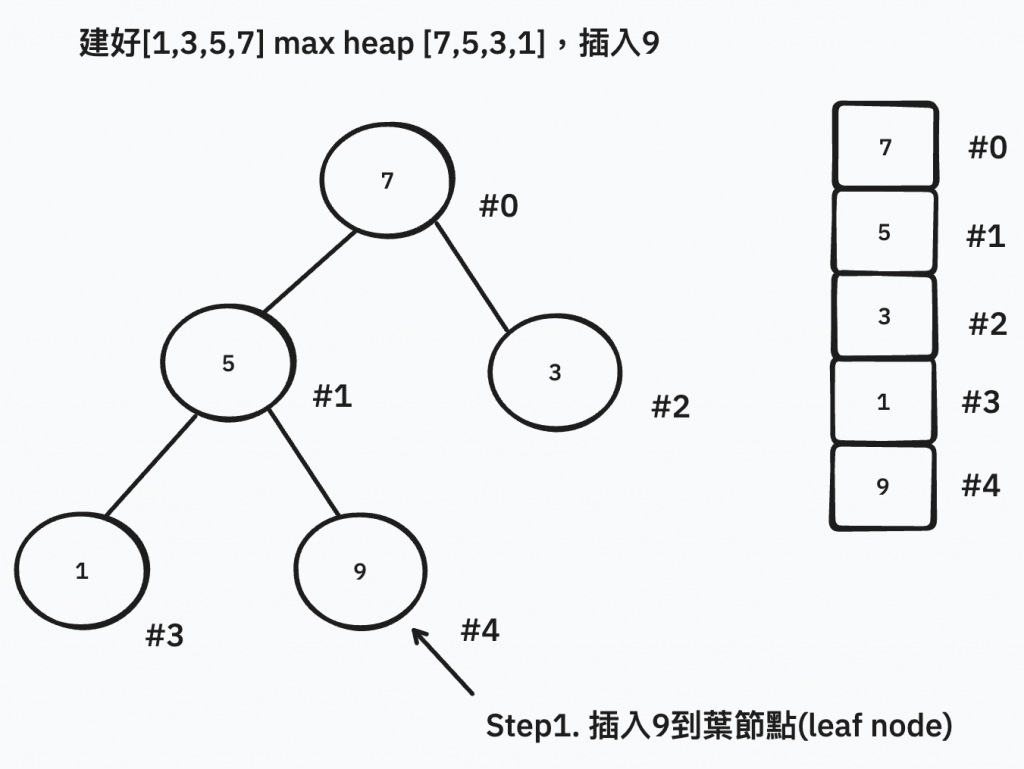
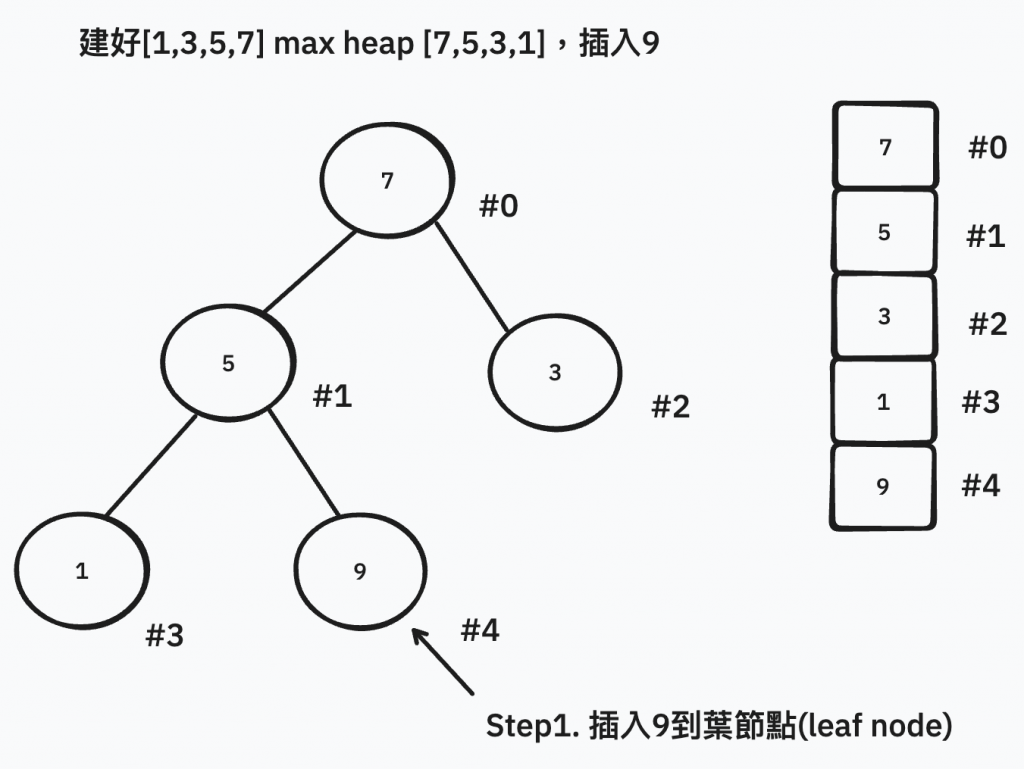
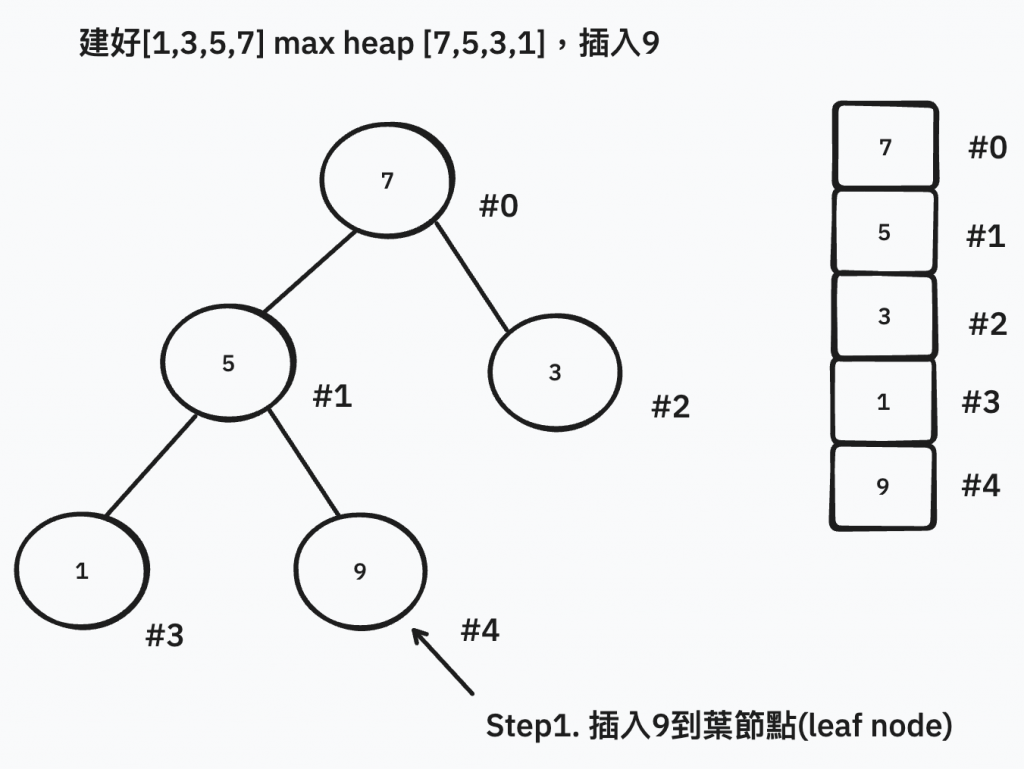
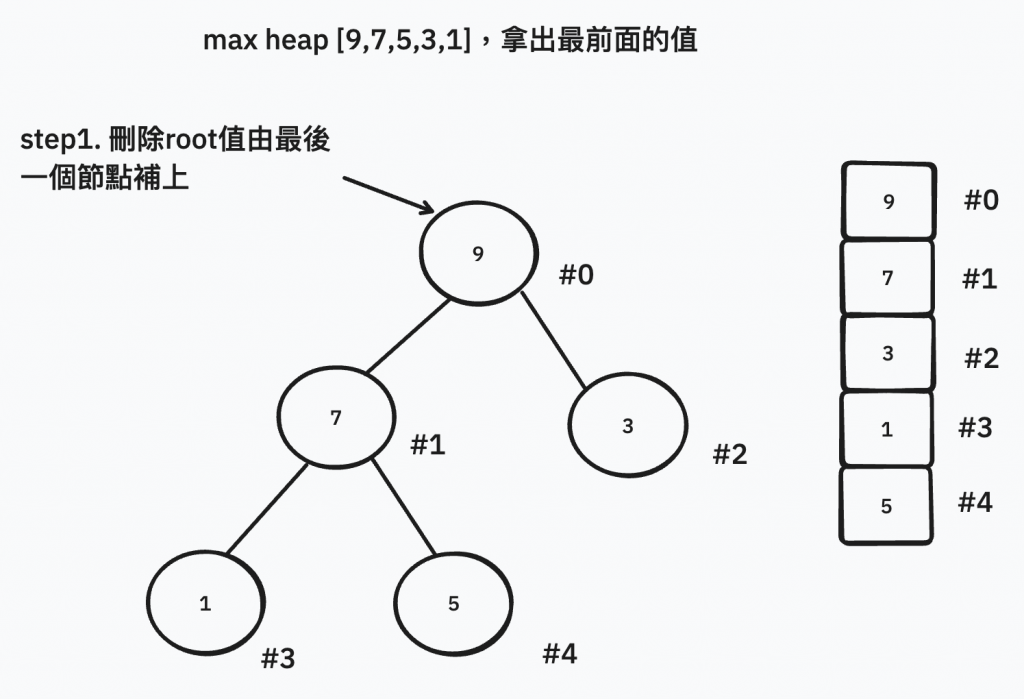
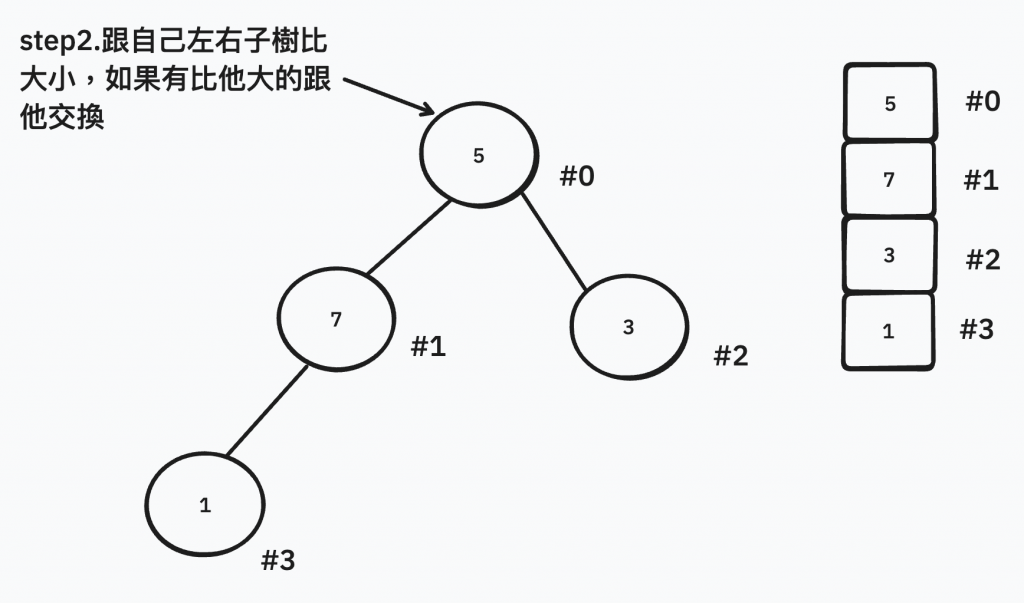
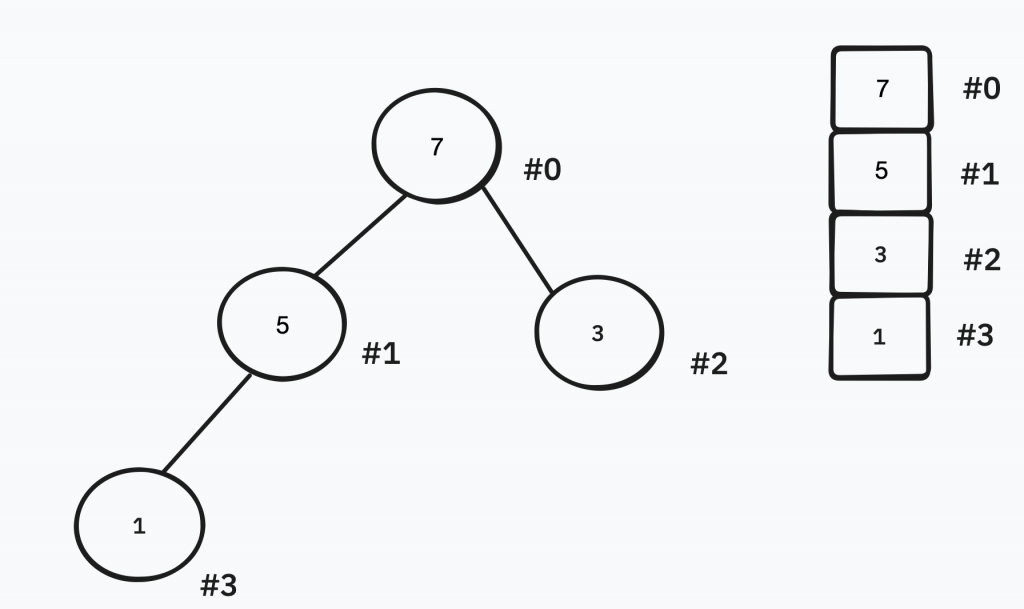
struct MaxHeap {
data: Vec<i32>,
}
impl MaxHeap {
fn new() -> Self {
MaxHeap { data: Vec::new() }
}
fn peek(&self) -> Option<i32> {
self.data.get(0).cloned()
}
fn push(&mut self, val: i32) {
self.data.push(val);
self.sift_up(self.data.len() - 1);
}
fn pop(&mut self) -> Option<i32> {
if self.data.is_empty() {
return None;
}
let last_index = self.data.len() - 1;
self.data.swap(0, last_index);
let max = self.data.pop();
self.sift_down(0);
max
}
fn sift_up(&mut self, mut idx: usize) {
while idx > 0 {
let parent = (idx - 1) / 2;
if self.data[idx] > self.data[parent] {
self.data.swap(idx, parent);
idx = parent;
} else {
break;
}
}
}
fn sift_down(&mut self, mut idx: usize) {
let n = self.data.len();
loop {
let left = 2 * idx + 1;
let right = 2 * idx + 2;
let mut largest = idx;
if left < n && self.data[left] > self.data[largest] {
largest = left;
}
if right < n && self.data[right] > self.data[largest] {
largest = right;
}
if largest != idx {
self.data.swap(idx, largest);
idx = largest;
} else {
break;
}
}
}
}
fn main() {
let mut heap = MaxHeap::new();
heap.push(1);
heap.push(3);
heap.push(5);
heap.push(7);
heap.push(9);
println!("{:?}", heap.peek()); // Some(9)
println!("{:?}", heap.pop()); // Some(9)
println!("{:?}", heap.pop()); // Some(7)
println!("{:?}", heap.pop()); // Some(5)
println!("{:?}", heap.pop()); // Some(3)
println!("{:?}", heap.pop()); // Some(1)
println!("{:?}", heap.pop()); // None
}
如同之前提到rust std::collections內建許多資料結構,預設是max heap
資料來源:https://doc.rust-lang.org/std/collections/struct.BinaryHeap.html
use std::collections::BinaryHeap;
let mut heap = BinaryHeap::new();
heap.push(1);
heap.push(3);
heap.push(5);
heap.push(7);
heap.push(9);
println!("{:?}", heap.peek()); // Some(&9)
println!("{:?}", heap.pop()); // Some(9)
println!("{:?}", heap.pop()); // Some(7)
println!("{:?}", heap.pop()); // Some(5)
println!("{:?}", heap.pop()); // Some(3)
println!("{:?}", heap.pop()); // Some(1)
println!("{:?}", heap.pop()); // None
使用標準庫 std::cmp::Reverse,反轉比較順序。
fn main() {
use std::collections::BinaryHeap;
use std::cmp::Reverse;
let mut heap = BinaryHeap::new();
heap.push(Reverse(1));
heap.push(Reverse(3));
heap.push(Reverse(5));
heap.push(Reverse(7));
heap.push(Reverse(9));
println!("{:?}", heap.peek()); // Some(&1)
println!("{:?}", heap.pop()); // Some(1)
println!("{:?}", heap.pop()); // Some(3)
println!("{:?}", heap.pop()); // Some(5)
println!("{:?}", heap.pop()); // Some(7)
println!("{:?}", heap.pop()); // Some(19)
println!("{:?}", heap.pop()); // None
}
